Kolkata has been a multi-cultural international centre for centuries, a legacy continued in some pockets amidst the overcrowded streets. Ranjita Biswas who recently visited the Maghen David Synagogue established by the Jewish Community in the city in 1884 traces its history
The Maghen David Synagogue was established by the Jewish Community in Calcutta (Kolkata today) in 1884. The construction, the tiles reflect the colonial-era influence. Prayers still take place. And people of all faiths are welcome to visit. However, even a distant conflict can sometimes affect local lives as we live in a globalised world. Due to the Hamas-Israel war, the doors of the synagogue have been temporarily closed for people other than Jews. Luckily, I could visit just before the decree came in.
Once you enter this place of worship, it is like stepping into an island of tranquility amidst the surrounding chaos – outside is one of the most congested thoroughfares in the city, Brabourne Road-Canning Street. Hand-pulled rickshaws, pick-up trucks, cars, scooters, not to forget stalls spilling on to the narrow road, can daunt even a veteran Kolkata citizen.
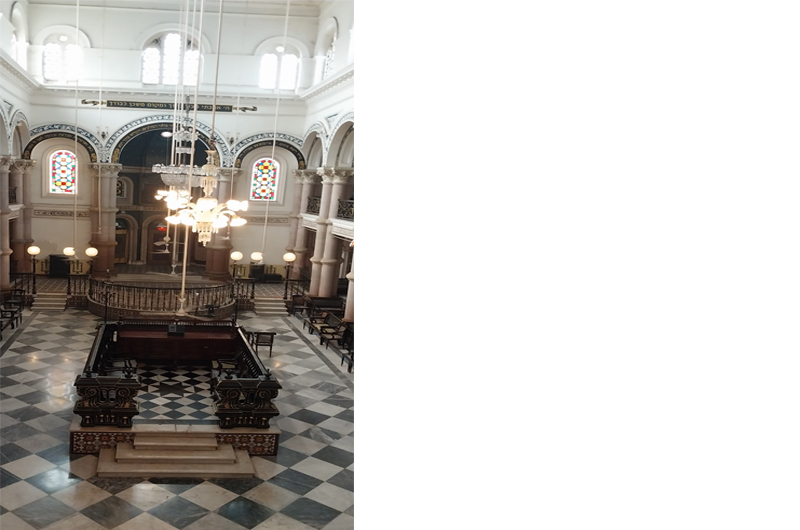
Kolkata has three synagogues, two of which are designated as Grade 1 heritage monuments by the Archaeological Survey of India. Besides them, two schools, a cemetery and several properties connected with the synagogues stand witness to the Jewish presence in the multicultural City of Joy.
In the late 17th and early 18th Centuries, people belong to the Baghdadi (from Iraq) Jewish Community arrived as traders in Calcutta – from Syria, Iraq and Iran. Calcutta was then the capital of British Indian Empire. Shalom Obadia Cohen from Aleppo, Syria, is said to be the first Jew to arrive in the city in 1685. He later became the court jeweller of the Nawab of Oudh. Other compatriots joined him soon.
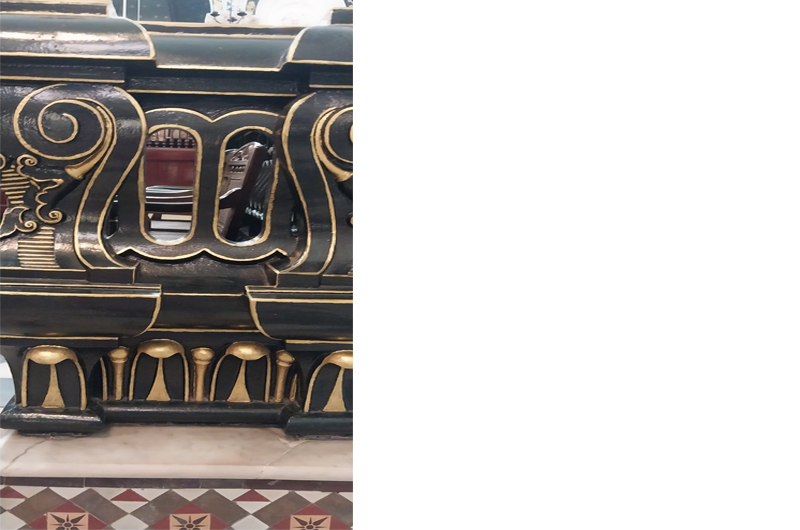
Western architectural influences. This picture shows some of the intricate workmanship.
Situated on the bank of the Hooghly River flowing into the Bay of Bengal with its own port, Calcutta was a thriving commercial hub at the time. In 1786, Aaron Obadiah Cohen founded the Calcutta Jewish Community. Even 168 years after his death, it continues to survive, though the number has dwindled greatly. Most of the progenitors migrated to Israel after its creation in 1948.
Going back in time, the Jewish Community was looking for a prayer hall. At first, a hall was rented from an Armenian (Armenians form another community who arrived early in Calcutta for trade and did very well) Later, in 1826, a house was bought which came to be known as Neveh Shalome. The house was later demolished and rebuilt as the beautiful and imposing Maghen Davids Synagogue by Sir David Ezra in 1884, in memory of his father. Anwar Khan, one of the employees in charge of the upkeep of the synagogue, showed us around the interiors. The men in our group had to wear the kippa head gear, as per Jewish custom.
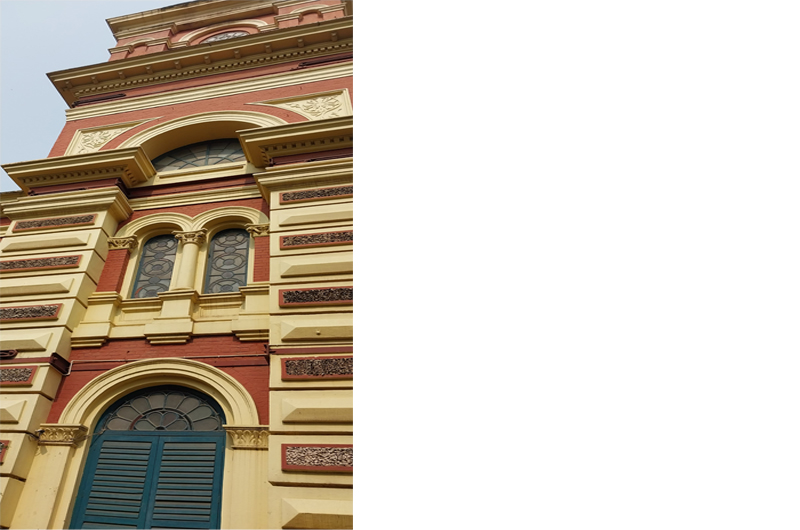
Despite migrating from a country in West Asia (Middle East), the Baghdadi Jews after arrival in Calcutta soon adopted a European style of living. The interiors of the synagogue thus reflect a merging of Middle Eastern influences with touches of the Western architectural style. It is evident in the Italian Renaissance style depicted by the elevated ceilings, pinkish-hued Mirzapur stone pillars adorned with pediments imported from London. There is also a steeple as in churches, which is not common synagogue architecture. Apparently, permission was taken from the Rabbi of Baghdad before adding it.
You can see here the menorah, multi-branched candelabra, and parokhet, curtains that separate the spiritual from the material world, a central feature of the Jewish religion. Tall Corinthian columns support the balcony with wrought iron structures that are embossed in gold. From the balcony you can see the pattern tiles that are called Spanish Sephardic. Men and women are not allowed to sit together in a synagogue and, so, the ground floor was where the men and boys sat, the gallery upstairs housed women and children. This custom is followed to this day.
As the Jewish Community expanded, a larger synagogue was built by Joseph Ezra and Ezekiel Judah in 1855-56 which came to be known as Beth El. With fine touches of Western influence on the interiors, it includes a large blue, white and red flowered patterned stained-glass window above the entrance.
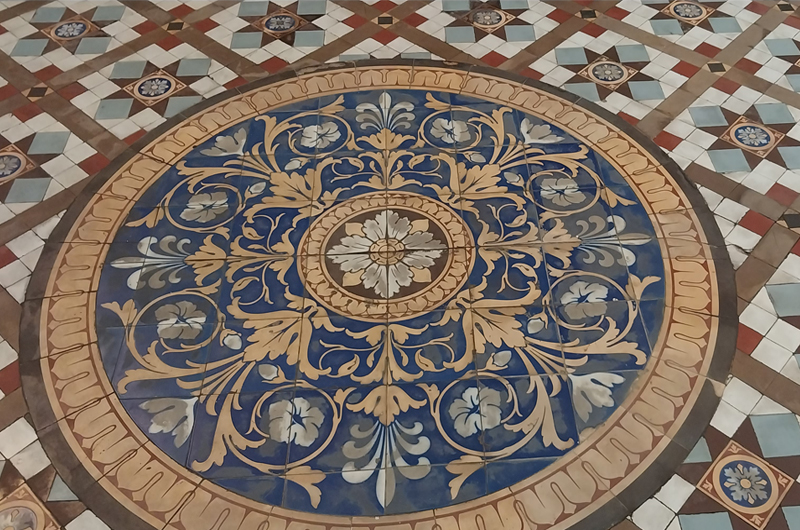
During the war years of the 1940s, Baghdadi Jews as well as many European Jews fleeing Nazi persecution migrated to and found safe haven in Calcutta. They actively took part in the city’s thriving commercial and cultural activities.
Maghen David and Neveh Shalome share the compound. The synagogue opens its doors at 10 am and closes at 4 pm. Lunch hour is between 1 pm and 2 pm when the door remains closed. The synagogue remains closed on Saturdays. You have to show an ID card for entry. Videography is not allowed.
Note: The synagogues of Kolkata show how the city once embraced nationalities from across the world, absorbed some of their influences, and stamped its own identity on their cultural ethos. The Jewish pastry shop Nahoum & Sons in New Market is well known. Nahoum Israel Mordecai, a talented confectioner, opened it in 1916. Its last Jewish scion died a couple of years ago. But the outlet is as popular as ever with the items still following the same recipes. At Christmas time you can see a queue of people waiting to buy a Nahoum cake.
There is also the Jewish Girl’s School on Park Street. Though the students are non-Jewish, the name still carries on. Most people do not know that there is also aJewish cemetery at Narkeldanga on the city’s northern fringe.
(The writer is a senior journalist who lives in Kolkata.)


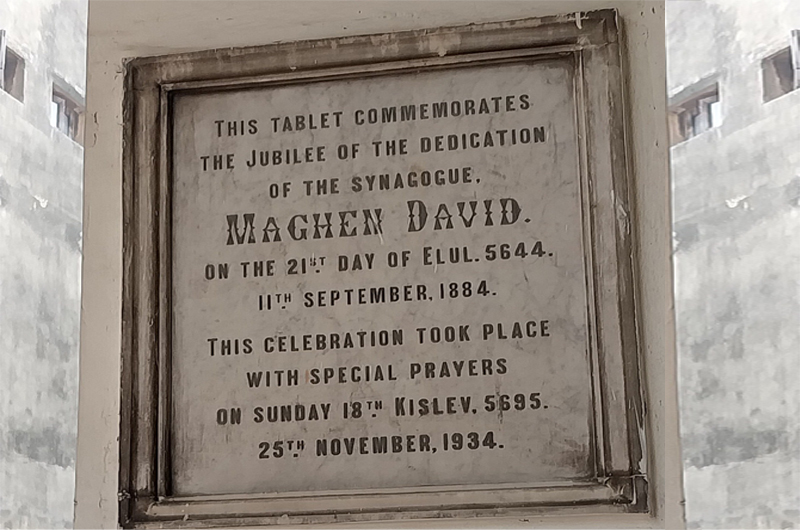
 from Webdoux
from Webdoux